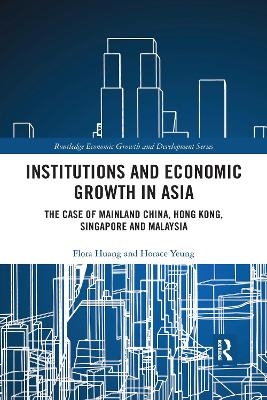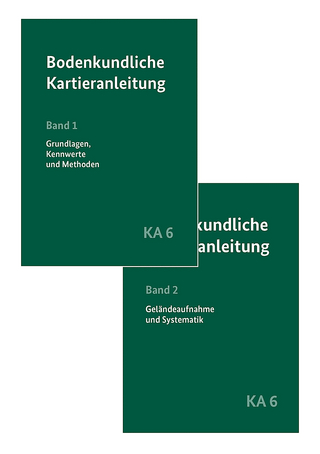
Institutions and Economic Growth in Asia
Routledge (Verlag)
978-0-367-59188-5 (ISBN)
This book explores the role of institutions in economic growth, looking in particular at specific Asian countries and at particular cities within those countries. It considers a wide range of factors besides institutions, including the law, cultural factors and overall government arrangements. The differences between the countries studied are highlighted, and the impact of these differences assessed: the impact of English common law on arrangements in Hong Kong, Singapore and Malaysia; sharia law in Malaysia; the differing lengths of time of colonial rule; the extent to which Chinese family businesses control an economy. Also studied are the degree to which the law is effectively applied, and a range of other social, economic and cultural factors. The book’s conclusions as to which factors have the greatest impact will be of considerable interest to economists of Asia and those interested in economic growth more widely.
Flora Huang is Senior Lecturer in Law at the University of Essex, UK. Horace Yeung is a Lecturer in Commercial Law at the University of Leicester, UK.
Introduction
Institutions and Growth: Setting the Scene
What Matters?
Varieties of Growth Models
Importance and Dynamics of Institutions
Legal Institutions
Role of Law
Enforcement
Political Institutions
Cultural Institutions
Economic Institutions
Concluding Remarks
China
3.1 Economic Growth of China
3.1.1 Planned Economy before 1978
3.1.2 Economic Reform and Growth after 1978
3.2 Legal Institutions
3.2.1 Quality of the Laws
3.2.2 Public Enforcement
3.2.3 Private Enforcement
3.3 Political Institutions
3.4 Cultural Institutions
3.5 Role of Market Infrastructure
3.6 Determinants of Future Growth
3.7 Concluding Remarks
Hong Kong
4.1 Economic Growth of Hong Kong
4.1.1 Economic Development as a British Colony
4.1.2 Post-Handover Economic Development
4.2 Legal Institutions
4.2.1 Quality of the Laws
4.2.2 Public Enforcement
4.2.3 Private Enforcement
4.3 Political Institutions
4.4 Cultural Institutions
4.5 Role of Market Infrastructure
4.6 Determinants of Future Growth
4.7 Concluding Remarks
Singapore
5.1 Economic Growth of Singapore
5.1.1 Growth before Independence
5.1.2 Post-independence Economy
5.2 Legal Institutions
5.2.1 Quality of the Laws
5.2.2 Public Enforcement
5.2.3 Private Enforcement
5.3 Political Institutions
5.4 Cultural Institutions
5.5 Role of Market Infrastructure
5.6 Determinants of Future Growth
5.7 Concluding Remarks
Malaysia
6.1 Economic Growth of Malaysia
6.1.1 Growth before Independence
6.1.2 Post-independence Economy
6.2 Legal Institutions
6.2.1 Quality of the Laws
6.2.2 Public Enforcement
6.2.3 Private Enforcement
6.3 Political Institutions
6.4 Cultural Institutions
6.5 Role of Market Infrastructure
6.6 Determinants of Future Growth
6.7 Concluding Remarks
Globalisation, Regionalism and Interdependence of Economies
7.1 Rise of China as Engine of Global and Asian Growth
7.1.1 China and Hong Kong
7.1.2 China and Singapore
7.1.3 China and Malaysia
7.2 Transcontinental and Regional Cooperation: Lessons from ASEAN, TPP and OBOR
7.2.1 ASEAN
7.2.2 TPP
7.2.3 OBOR
7.3 Concluding Remarks
Conclusion
| Erscheinungsdatum | 01.07.2020 |
|---|---|
| Reihe/Serie | Routledge Economic Growth and Development Series |
| Verlagsort | London |
| Sprache | englisch |
| Maße | 156 x 234 mm |
| Gewicht | 467 g |
| Themenwelt | Naturwissenschaften ► Geowissenschaften ► Geografie / Kartografie |
| Sozialwissenschaften ► Soziologie ► Spezielle Soziologien | |
| Wirtschaft ► Allgemeines / Lexika | |
| Wirtschaft ► Volkswirtschaftslehre ► Makroökonomie | |
| ISBN-10 | 0-367-59188-X / 036759188X |
| ISBN-13 | 978-0-367-59188-5 / 9780367591885 |
| Zustand | Neuware |
| Informationen gemäß Produktsicherheitsverordnung (GPSR) | |
| Haben Sie eine Frage zum Produkt? |
aus dem Bereich


